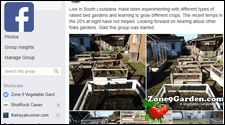Peppers of all types, ranging from sweet bell peppers to super hot habanero peppers, have become one of the most popular crops to grow in the home garden. They can be grown in containers just as successfully as in the ground. Many varieties of peppers can even be grown as perennials (for multiple years) if they are protected from the cold.
Location Selection for Peppers
Quick Overview
Peppers require full sun for 8 hours or more and are most productive in a well drained area. Select a site in the garden that receives direct sunlight for most of the day and is not low lying (pepers do not like to have damp roots).
Continue Reading: Location Selection -In-Depth Article
Soil Preparation for Peppers
Quick Overview
As with most plants, peppers prefer a loamy, well drain soil that is high in organic matter. Most peppers prefer a slightly acidic soil with a pH between 6.0-6.8 but can tolerate a little more acidic or a little more basic.
The best method of soil prep for peppers is to fold into the soil large amounts of high quality compost. This compost will provide most of the nutrients needed, including the micro nutrients that the plants require. If compost is not available a high quality balanced organic fertilizer can be added to the soil to help increase its nutrients.
Continue Reading: Soil Preparation – In-depth Article
Sowing Pepper Seeds
Quick Overview
Pepper seeds, in general, are one of the slowest groups of seeds to germinate. They also have high heat requirements.
Sow seeds in peat pots or high quality seed starting soil indoors 4-7 weeks before the last frost date. Keep the soil moist and around 75-85 degrees. Once the seed germinates keep the seedling’s soil well watered (moist but not soggy) and make sure the plant receives ample amounts of light.
Continue Reading: Sowing Pepper Seeds – In-depth Article
Transplanting Pepper Plants
Quick Overview
Whether pepper plants where started from seed indoors or purchased from a garden shop, pepper plants will eventually need to be transplanted outdoors. Pepper plants are ready to be moved outdoors 3-5 weeks after the last expected frost date.
Decide if the plant is to be transplanted directly into the ground or if it will be transplanted to a suitable sized container. After the plant has been hardened off, dig a hole in the soil large enough for the entire root system of the pepper plant. Place the plant in the hole filling in the gaps with soil and covering the roots by about one inch and thoroughly water the plant in.
Continue Reading: Transplanting Pepper Plants – In-depth Article
Pepper Plant Care
Quick Overview
Once established pepper plants are fairly easy to care for. They do not require massive amounts of nutrients or water, but they also should not be neglected.
Pepper plants prefer soil that is just barely damp. Make sure the soil is well drained and that moisture is not allowed to build up over time. If the soil becomes to damp, pepper plant roots will begin to rot.
Every three months a good amount of high quality compost should be added to the soil that pepper plants are growing in. If compost is not available a high quality balanced organic fertalizer can be used according to the packages instructions.
Continue Reading: Pepper Plant Care – In-depth Article
Related Articles
In-depth Articles
- Location Selection for Peppers
- Soil Preparation for Peppers
- Sowing Pepper Seeds
- Transplanting Pepper Plants
- Pepper Plant Care


